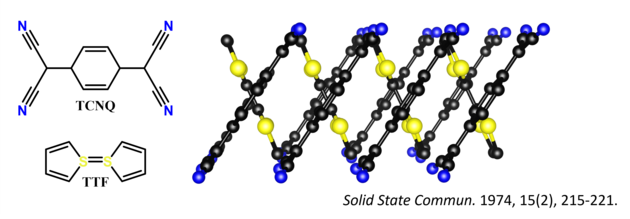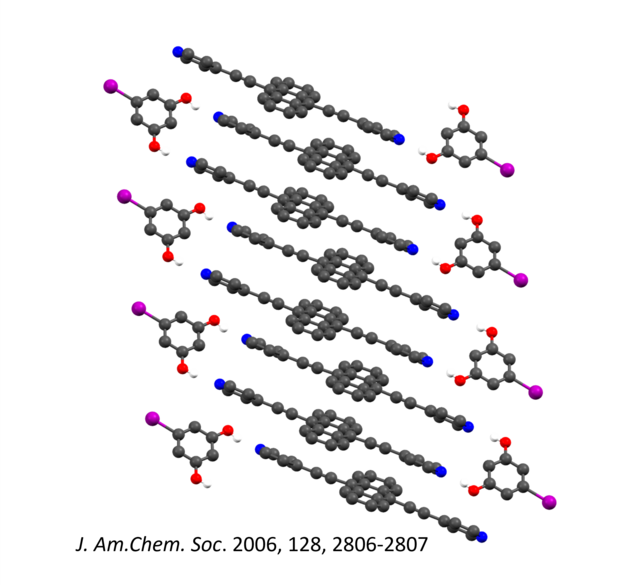Crystal Engineering for Organic Semiconductors and Molecular Solar-Thermal Energy Storage

Our research group aims to take crystal engineering beyond solid state chemical reactions and into the field of solid-state material chemistry. We aim to apply our cocrystallization methods and crystal engineering techniques to further develop and create more efficient Organic Semiconductors (OSCs) and to enter the field of green energy by the production of new materials and technologies for Molecular Solar-Thermal Energy Storage (MOST).

Our group has already demonstrated that our crystallization technique can be applied to OSCs to stack the OSC molecules to enhance their electrical properties. Solids based on OSC molecules are projected to be active elements in plastic-based electronic circuits (e.g. transistors). Such circuits are not expected to compete with traditional inorganic (i.e. silicon) semiconductors. Instead, OSC materials are projected to fill a role as components of mass-produced items such as identification tags, smart cards, and pixels for active matrix displays (e.g. flat panels). OSCs also offer advantages of facile processability (e.g. solution deposition) and chemical tunability (e.g. organic synthesis), as well as light-weight and flexible mechanical properties, and provide better functionality to overcome power consumption challenges.
We foresee that our cocrystal method will solve a long-standing structural chemistry problem in the field of organic electronics and anticipate that it will open opportunities to not only allow for varieties of OSC molecules to be stacked into geometries to optimize movement of electrical charge, but we also aim develop crystals with OSC molecules that are chemically reactive. These chemically reactive materials can then be used, in principle, for applications in lithography, providing opportunities to ‘write’ electrical regions in crystals using UV light with high precision and in three dimensions (i.e. nanosized features). Revolutionary developments in the organic electronics research and related technology fields can be expected.
Additional ground-breaking sustainable materials research by the MacGillivray group will involve solar-thermal energy storage materials. The development of new materials and technologies for solar-thermal energy storage and management is vital to support a national and global move toward renewable energy sources. Solar energy is a virtually infinite resource to be exploited to create a carbon-neutral footprint. MOST systems provide a molecular and portable approach to store solar energy that is then released on demand as heat, alleviating the natural intermittency of solar supply. These systems exploit photochemical reactions of the exact kind pioneered by Prof. MacGillivray to form CBs in the solid state. Heat is released into the environment when the photochemical reaction is reversed and can be used for technological applications including those where the heat is converted to electricity. A major consideration when developing MOST systems is operation under real conditions and, more specifically, in concentrated media (i.e. solid state). To date, work on MOST systems has been performed in liquids and in less dense solids (e.g. amorphous solids).